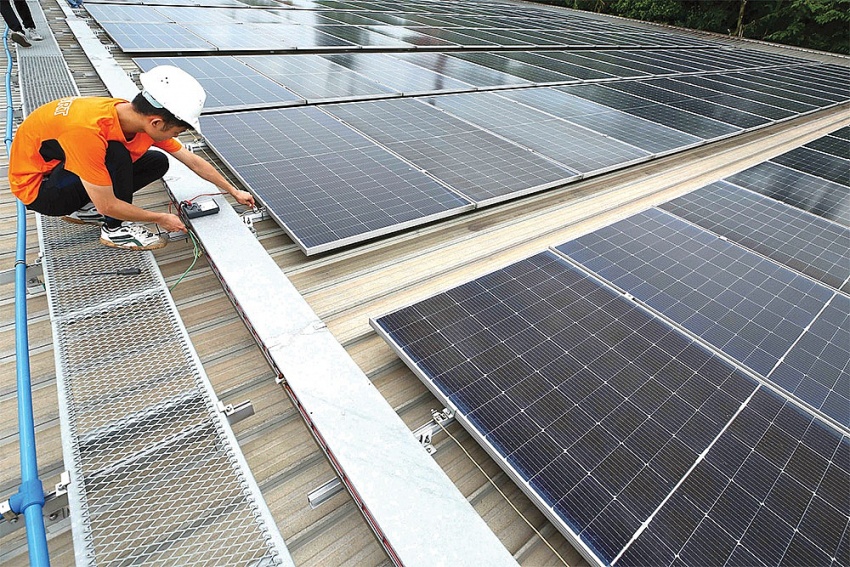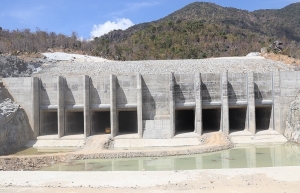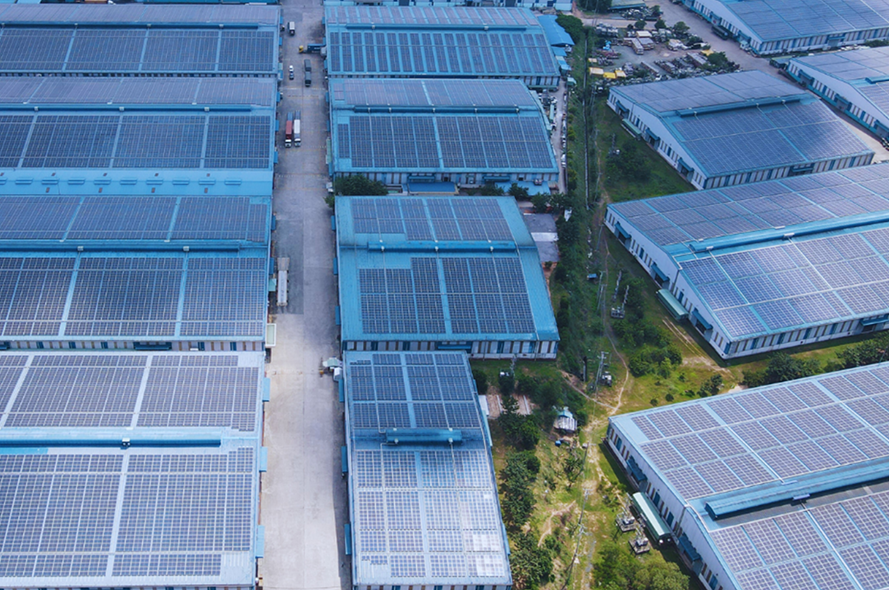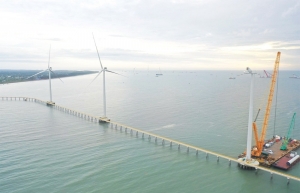Investors seek stable renewables policies
The draft amended Law on Electricity (LoE) has been presented to the National Assembly (NA) for review during its current session. The draft includes nine chapters and 119 articles, focusing on key areas such as ensuring national energy security, encouraging renewable energy development, fostering competitive electricity markets, and improving safety regulations for electricity usage and infrastructure.
 |
| Leaders recognise the importance of clear, practical regulations for various energy projects, photo Le Toan |
During discussions on the draft law, NA deputies underscored the importance of synchronising regulations with other laws, particularly those related to renewable energy and ensuring the new legislation is clear, practical and adaptable to global trends in the electricity sector.
Do Duc Chien, an expert of the Electricity and Renewable Energy Department under the Ministry of Industry and Trade, stated that several new regulations were supplemented to promote the development of renewable energy and electricity.
This supplementation is a step forward to institutionalise policies that include mechanisms to encourage clean energy sources to replace fossil energy. The draft also aims to reduce net emissions to zero by 2050, in line with the national plan.
“The 2004 LoE, with four previous amendments, and other laws and regulations such as the Law on Investment and the 2030 master plan, stipulates incentives for power generation projects from new and renewable energy. However, these regulations still face challenges that the current provisions have yet to fully address,” Chien said.
For example, in the Law on Investment, new energy and renewable energy have been identified as investment incentive industries, even though the law has not yet specified the subjects in this field.
The master plan for 2030 with the vision to 2050, established in 2023, has provided orientations for the development of renewable energy and regional links. However, specific concepts of renewable and new energy sources in the electricity sector have not yet been legalised.
According to policymakers, to fill these gaps, the draft amendments to the LoE included provisions on new energy electricity and renewable energy electricity in Article 4. The draft also adds provisions on promoting “self-produced and self-consumed electricity”.
These alterations will contribute to reinforcing the mechanism for investors in renewable energy projects in the context they struggle with overlaps in policies.
“The policy mechanism must be consistent, clear, and stable. Sudden changes of policies mean enterprises can’t continue to mobilise capital to implement their projects. Meanwhile, banks are stuck in determining debt groups for clients,” said Nguyen Anh Tuan, representative in Vietnam for B.Grimm Power Co., Ltd.
Tuan stated that although provincial leaders said investors are welcome, when starting to implement projects they encounter obstacles, especially in the stage of land clearance.
“According to the regulation, the land price of the land plot is to be valued by the multiplication between the land price in the land price list and the land price adjustment coefficient, called the K-coefficient. In some localities, the investor proposed to pay this equal to 3-fold compared to the land price, but local households did not agree. Even, in many highland villages, local leaders demand a land clearance compensation fee of up to VND10 billion ($416,000) per hectare, which is impossible,” Tuan said.
A notable case is the LIG Huong Hoa 1 wind power project in the central province of Ha Tinh, funded by LIG-Huong Hoa 1 JSC. With a capacity of 48MW and a total investment of over $87 million, the project was expected to be completed in April 2025.
However, compensation and site clearance has stalled. Nearly a year after the decision to approve the compensation budget was issued, the investor has received less than 60 per cent of cleared land.
Many local households require high compensation fees, and the Huong Hoa-Dakrong Protective Forest Management Board and the forest exploitation unit also have not reached a compromise, leading to the failure to hand over the site to the investor, as per the requirement of the provincial People’s Committee.
As a result, a groundbreaking ceremony has already been delayed by four months. Besides that, the general contractor and the supervision consultant have withdrawn from the project. Most orders and equipment purchases have been suspended, possibly violating contract terms.
Many other projects in Ha Tinh province are seeking deadline extensions to complete their projects due to pending issues during the implementation process.
 | Assurances made from EU to support Vietnam’s renewables The European Union has pledged to continue providing more support for Vietnam in developing renewable energy and achieving its net-zero emissions as internationally committed. |
 | Dutch bank to pump $30 million in renewables in Southeast Asia Dutch Entrepreneurial Development Bank (FMO) has proposed to place $30 million into greenfield renewable energy platform Sustainable Asia Renewable Assets (SARA). |
 | Levanta Renewables to acquire rooftop solar system in Vietnam Levanta Renewables, a leading Southeast Asia-focused renewable energy platform backed by Actis, is acquiring a 28.7MWp rooftop solar system from related companies of locally invested Tien Nga JSC. |
 | Tra Vinh aims to become renewables exporter hub The Mekong Delta province of Tra Vinh is making concerted efforts to grow into one of the major marine economy and renewable energy centres nationwide. |
What the stars mean:
★ Poor ★ ★ Promising ★★★ Good ★★★★ Very good ★★★★★ Exceptional
Related Contents
Latest News
More News
- Heavy industries set for pilot greenhouse gas quotas (December 25, 2025 | 10:00)
- Swedfund invests in MSME growth and climate action in Vietnam (December 19, 2025 | 11:42)
- GreenYellow brings solar energy to light up remote schools in Tuyen Quang province (December 19, 2025 | 08:00)
- Charge+, Grab partner to develop EV charging network in Vietnam (December 18, 2025 | 17:11)
- Linking sci-tech and innovation to Vietnam’s net-zero future (December 18, 2025 | 14:31)
- Driving double-digit growth through green and circular transformation in Vietnam (December 17, 2025 | 09:00)
- Standard Chartered and ACCA deepen collaboration to develop Vietnam’s talent for a sustainable future (December 15, 2025 | 18:18)
- Schaeffler reports strong early output from Dong Nai solar project (December 12, 2025 | 15:16)
- Forestry conference highlights biodiversity and sustainability goals (December 09, 2025 | 13:35)
- Home Credit honoured among top 10 sustainable companies in trade and services (December 09, 2025 | 12:18)

 Tag:
Tag:



















 Mobile Version
Mobile Version